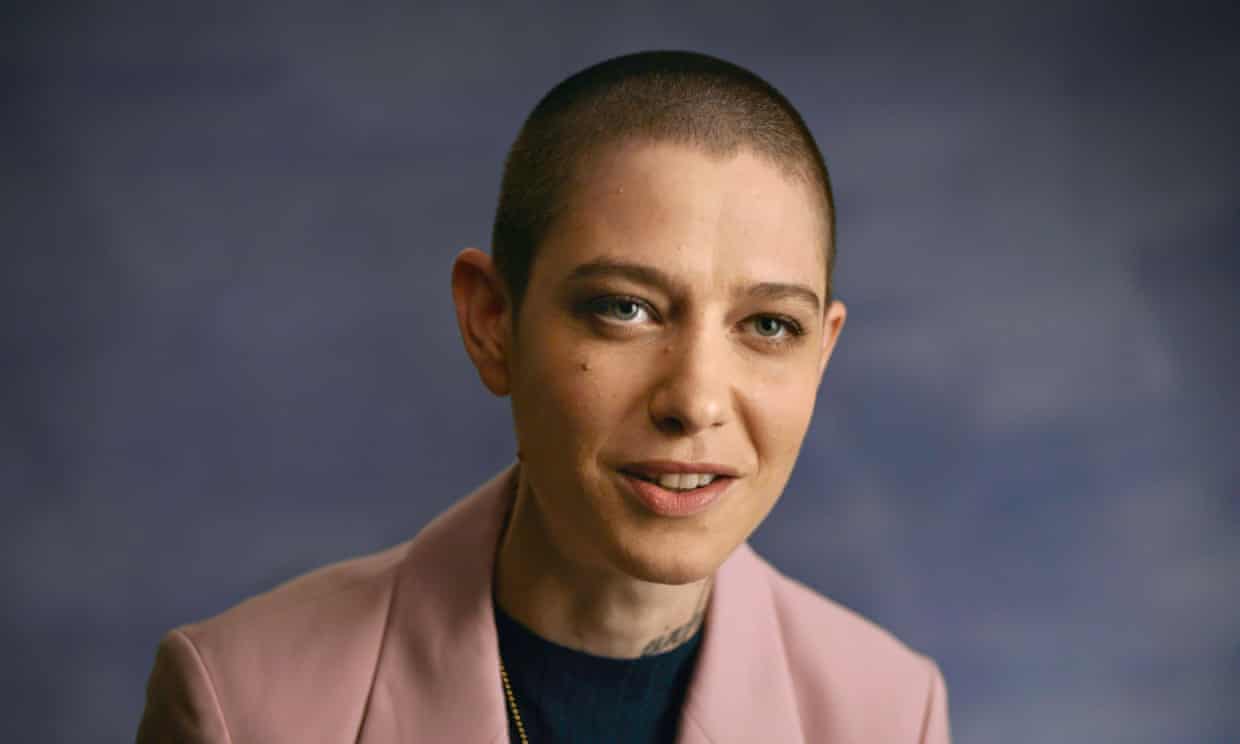
TV review
Visible: Out on Television review – a fabulous history of small-screen gayness
With jaw-dropping old clips and starry talking heads from Ellen to Oprah, this series shows how far LGBTQ representation has come – and the power TV has to make change
by Rebecca NicholsonThere are moments of dark humour in Visible: Out on Television (Apple TV+), but they are buried deep. This history of mostly late 20th-century LGBTQ life, as seen through the lens of American TV, moves from the televised McCarthy hearings to the dominance of the celebratory Ryan Murphy empire (Glee, Pose, etc). When it settles for a period on Dynasty in the 1980s, it becomes clear that it has been a long, hard journey to get to a show such as the drag ball drama Pose. Dynasty’s Steven Carrington was gay, until he wasn’t, but when he was again, his male love interests tended to meet a sticky end. “Multiple male partners were killed,” intones the voiceover in hilariously sombre tones.
In 1995, a feature-length documentary called The Celluloid Closet looked at homosexuality in Hollywood and in the movies. It was a story of subtexts, codes and moral outrage. Visible performs a similar task for the small screen. But television has always felt more intimate and homely than cinema, which allows Visible to go deeper and wider when it comes to social and cultural changes. So this thorough docuseries from the team behind The Keepers covers the reality TV, news interviews and footage of riots and protests, sitcoms and dramas that all lay down another paving stone on the path to visibility. Over five episodes, loosely chronological and each gathered around a theme, it sees television as both a portrait of what was happening and as a catalyst for cultural shifts.
The early episodes are its most fascinating, and the archive footage is a treasure trove of prejudice and ignorance. When LGBTQ people did appear on TV in the 50s and 60s, it was, at best, as specimens or curiosities. One contributor recalls being asked on to a talk show for which the subject was disability. As a lesbian, she joined a deaf man and a man with multiple sclerosis. Grave psychiatrists spoke soberly about homosexuality as an incurable mental illness. When, in the early 60s, a sitcom pilot was not picked up because the closeted lead was considered “too butch”, it drove her out of acting altogether. George Takei, one of a number of big talking heads, remembers thinking: “I’ve got to watch my behaviour if I’m going to build my career as an actor.”
Wanda Sykes and Wilson Cruz (who played the groundbreaking character Rickie in one of the best teen dramas of all time, My So-Called Life) co-produce the series, and appear on screen along with Ellen DeGeneres, Armistead Maupin, Caitlyn Jenner, Ryan Phillippe, Neil Patrick Harris and Oprah Winfrey, among many others. Some are more measured than others – on a segment about why the Stonewall riots were not televised, the activist Miss Major Griffin-Gacy says “We were fighting for our fuckin’ lives”, while Billy Porter’s fury about the Aids epidemic is utterly shaming for those who have forgotten it already. But this is ambitious, comprehensive and, vitally, inclusive.

The film-makers understand that, historically, television has been dominated by cisgendered white men, which skews the narrative, and they make every effort to correct for this. Trans and gender-nonconforming contributors discuss their history. There is brilliant archive footage of Christine Jorgensen, one of the Americans to have sex-reassignment surgery, talking about her transition to a crowd of reporters in the 50s. A later episode discusses the erasure of bisexuality by way of Carrie in Sex and the City dismissively referring to it as “just a layover on the way to Gaytown”. Empire, The Wire and Noah’s Ark are analysed in terms of their portrayal of the experiences of black gay men. In one particularly moving segment of the series, Cruz reveals just how similar his own story was to that of his character in My So-Called Life. Cruz was kicked out of the house when he came out to his father, and lived between his car and friends’ sofas. The show’s creator, Winnie Holzman, wrote it into the show. Cruz says that, even now, he gets daily reminders of what it meant for gay teenagers to see a character like Rickie on the screen, even though My So-Called Life ended after just one season, 25 years ago.
Visible does a convincing job of using TV to take the pulse of the American people. It is an American series, and as such it assumes a knowledge that may not exist for those who did not grow up in US households. Occasionally, it defaults to broad brushstrokes, and when it does it has the curious effect of feeling both overly long and not detailed enough. Perhaps there were too many ideas or too many people to cram into five episodes, even though some push past the hour mark. Still, it is an elegant education, and its vast library of footage makes for a smorgasbord of queer entertainment through the ages.